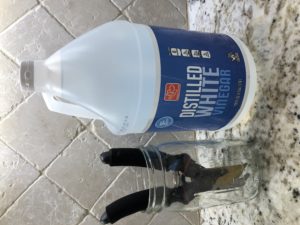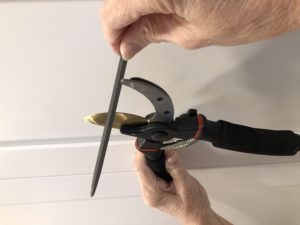Cleaning and Revitalizing Your Garden Tools
go.ncsu.edu/readext?685015
en Español / em Português
El inglés es el idioma de control de esta página. En la medida en que haya algún conflicto entre la traducción al inglés y la traducción, el inglés prevalece.
Al hacer clic en el enlace de traducción se activa un servicio de traducción gratuito para convertir la página al español. Al igual que con cualquier traducción por Internet, la conversión no es sensible al contexto y puede que no traduzca el texto en su significado original. NC State Extension no garantiza la exactitud del texto traducido. Por favor, tenga en cuenta que algunas aplicaciones y/o servicios pueden no funcionar como se espera cuando se traducen.
Português
Inglês é o idioma de controle desta página. Na medida que haja algum conflito entre o texto original em Inglês e a tradução, o Inglês prevalece.
Ao clicar no link de tradução, um serviço gratuito de tradução será ativado para converter a página para o Português. Como em qualquer tradução pela internet, a conversão não é sensivel ao contexto e pode não ocorrer a tradução para o significado orginal. O serviço de Extensão da Carolina do Norte (NC State Extension) não garante a exatidão do texto traduzido. Por favor, observe que algumas funções ou serviços podem não funcionar como esperado após a tradução.
English
English is the controlling language of this page. To the extent there is any conflict between the English text and the translation, English controls.
Clicking on the translation link activates a free translation service to convert the page to Spanish. As with any Internet translation, the conversion is not context-sensitive and may not translate the text to its original meaning. NC State Extension does not guarantee the accuracy of the translated text. Please note that some applications and/or services may not function as expected when translated.
Collapse ▲Your garden tools are probably in need of some attention after their last season of use so we’ll look at removing rust from metal surfaces, sharpening cutting surfaces, and troubleshooting other working surfaces of your individual tools. So let’s give them some tender loving care they need!
All handheld cutting and digging tools need to be washed immediately after use. If possible, place your washed tools in a sunny location to thoroughly dry before storing. Washing tool surfaces before storage reduces the accumulation of rust and better maintains cutting surfaces. No matter how diligent the gardener is, however, rust finds its way onto metal surfaces.
Rust is simply the corrosion of iron or steel after exposure to water or air moisture. Leaving soil or vegetative residue on metal surfaces invites rust and dulls cutting surfaces. Dull cutting surfaces and rust force the gardener to work harder to achieve the same results. Annual tool maintenance, whether at the end of the gardening season or before the onset of longer sunny days, is necessary. Below are some simple steps to maintain and prolong the life of gardening tools:
Fill a Mason jar or a garden bucket 2/3 full of white distilled vinegar. Insert bypass clipper or lopper blade side down, and soak overnight. In the morning, rinse clipper or lopper under running water. Dry with a clean soft cloth. Use a small wire brush or scouring pad to remove loose rust.

Cleaning Pruners. Photo: Linda Jendro
Hold a small flat metal file at a 45-degree angle on the blade. Make small straight strokes out from the angled surface. Repeat over the entire cutting surface. Turn the clipper or lopper over and carefully pass a soft cloth over the back of the blade. Feel for any metal burrs which will snag the cloth. If burrs occur during sharpening, use a small piece of sand paper or a scouring pad to pry off tiny, rough burrs. Lastly, make sure any screws are tightly set and finish with a drop of 3-In-One Oil into the crevice where the blades cross.
Submerge metal parts of shovels, clamshell hole diggers, hoes, etc. in a bucket of white distilled vinegar overnight. Rake tines can be wrapped in newspaper and thoroughly wetted with vinegar overnight. Rinse off the metal blade(s) and dry with a clean, soft cloth. Remove any stubborn rust with a metal brush or scouring pad. Rake tines should be rust free now. For rake tines with aggressive rust, repeat in newspapers soaked with vinegar an additional overnight. With a soft cloth dampened with vegetable oil, rub the front and back of all metal rake tines.

Sharpening Pruner. Photo: Linda Jendro
For digging and scraping tools, hold the flat metal file at a 45-degree angle and draw the file over the cutting edge. Turn the digging or scraping blade over and repeat on the back. Use a soft cloth on the edge to check for metal burrs. Remove burrs with sand paper or a scouring pad. If the tool contains a wooden handle, run a small piece of sandpaper over the handle to remove splinters. With a soft cloth dampened with linseed oil, rub the wooden handle to protect the wood. Rub the metal parts of digging and scraping tools with a soft cloth containing vegetable oil. Check the tightness of any screws holding metal parts to handles.
Written by: Linda Jendro, North Carolina Extension Master Gardener℠ Volunteer




